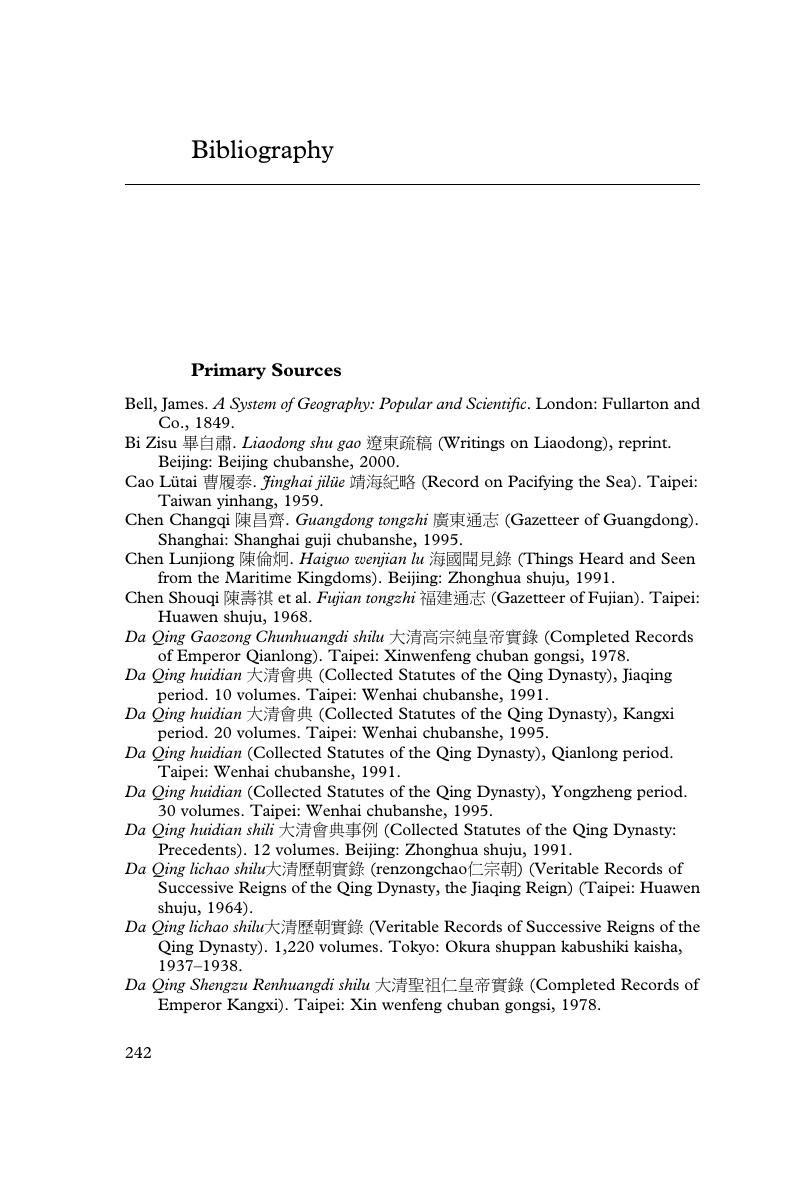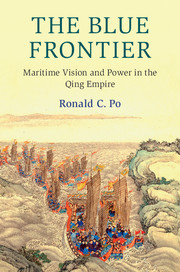Book contents
- The Blue Frontier
- Cambridge Oceanic Histories
- The Blue Frontier
- Copyright page
- Contents
- Figures
- Tables
- Preface
- Acknowledgments
- Emperors of the Qing Dynasty, 1644–1912
- Frontispiece
- Introduction
- 1 Setting the Scene
- 2 Modeling the Sea
- 3 The Dragon Navy
- 4 Guarded Management
- 5 Writing the Waves
- Conclusion
- Book part
- Bibliography
- Index
- References
Bibliography
Published online by Cambridge University Press: 17 August 2018
- The Blue Frontier
- Cambridge Oceanic Histories
- The Blue Frontier
- Copyright page
- Contents
- Figures
- Tables
- Preface
- Acknowledgments
- Emperors of the Qing Dynasty, 1644–1912
- Frontispiece
- Introduction
- 1 Setting the Scene
- 2 Modeling the Sea
- 3 The Dragon Navy
- 4 Guarded Management
- 5 Writing the Waves
- Conclusion
- Book part
- Bibliography
- Index
- References
Summary

- Type
- Chapter
- Information
- The Blue FrontierMaritime Vision and Power in the Qing Empire, pp. 242 - 290Publisher: Cambridge University PressPrint publication year: 2018



